Looking To Buy A New Projector?
If you are looking to buy a new projector for a classroom, meeting room or home theater, the image you project on the screen should make a great impression on your audience. Researching projectors can be confusing, with many acronyms and technological terms. Our projector guide will help answer common questions regarding terminology, features and other important considerations when you are choosing a projector.
Color Brightness and White Brightness (Lumens)
Projectors come in a wide range of brightness which are measured in lumens. The brighter the projector the higher the lumen rating, and, all else being equal, the more it will likely cost.
Contrast Ratio
Contrast ratio is the difference between light and dark on a screen, expressed by a number. If you take the brightest white on a screen and the darkest black and compare the luminosity, you get the contrast ratio. For example, a 1000:1 contrast ratio means that the brightest white is 1000x brighter than the darkest black.
Resolution
Resolution is the number of dots or pixels used to display an image. Higher resolutions mean that more pixels are used to create the image, resulting in a crisper, cleaner image. High resolution is important for projecting detailed charts and graphs, text, and high-definition video. The resolution is indicated by a number combination such as 1920 x 1200. This indicates that there are 1920 dots horizontally across the display by 1200 lines of dots vertically, equaling 2,304,000 total dots that make up the image seen on the screen.
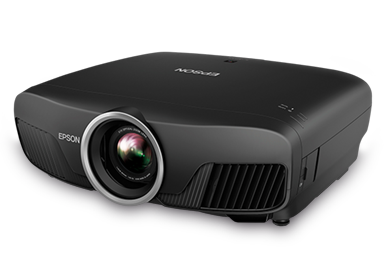
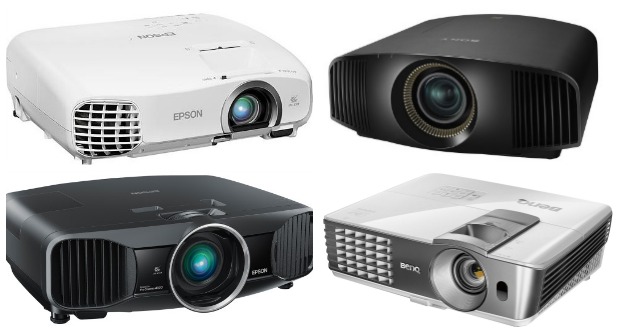

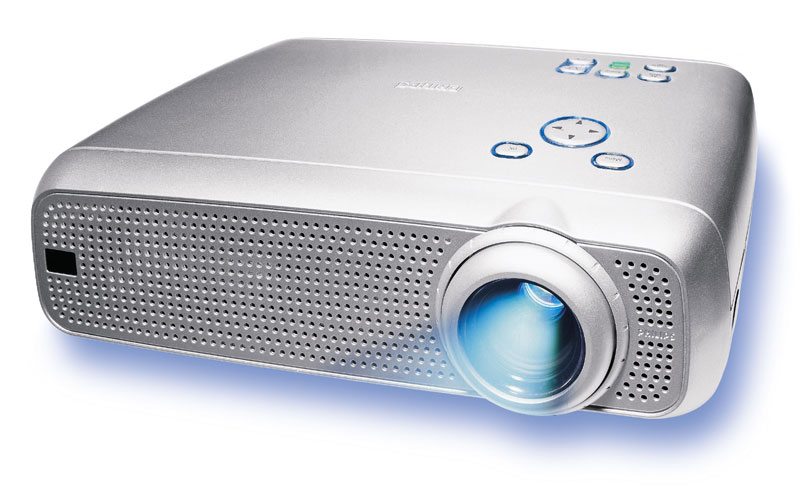
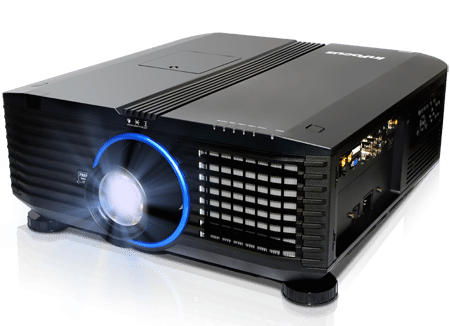
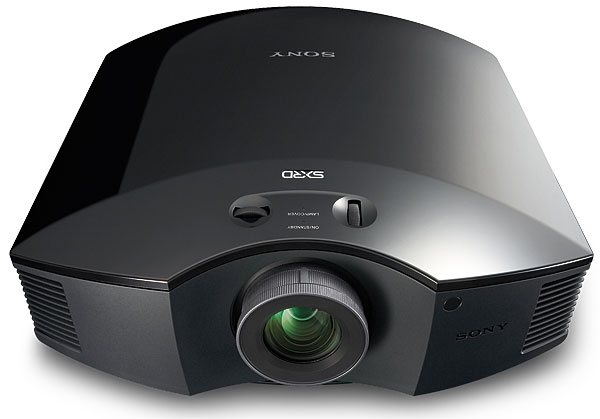
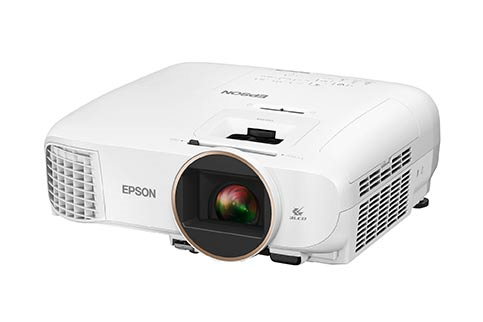
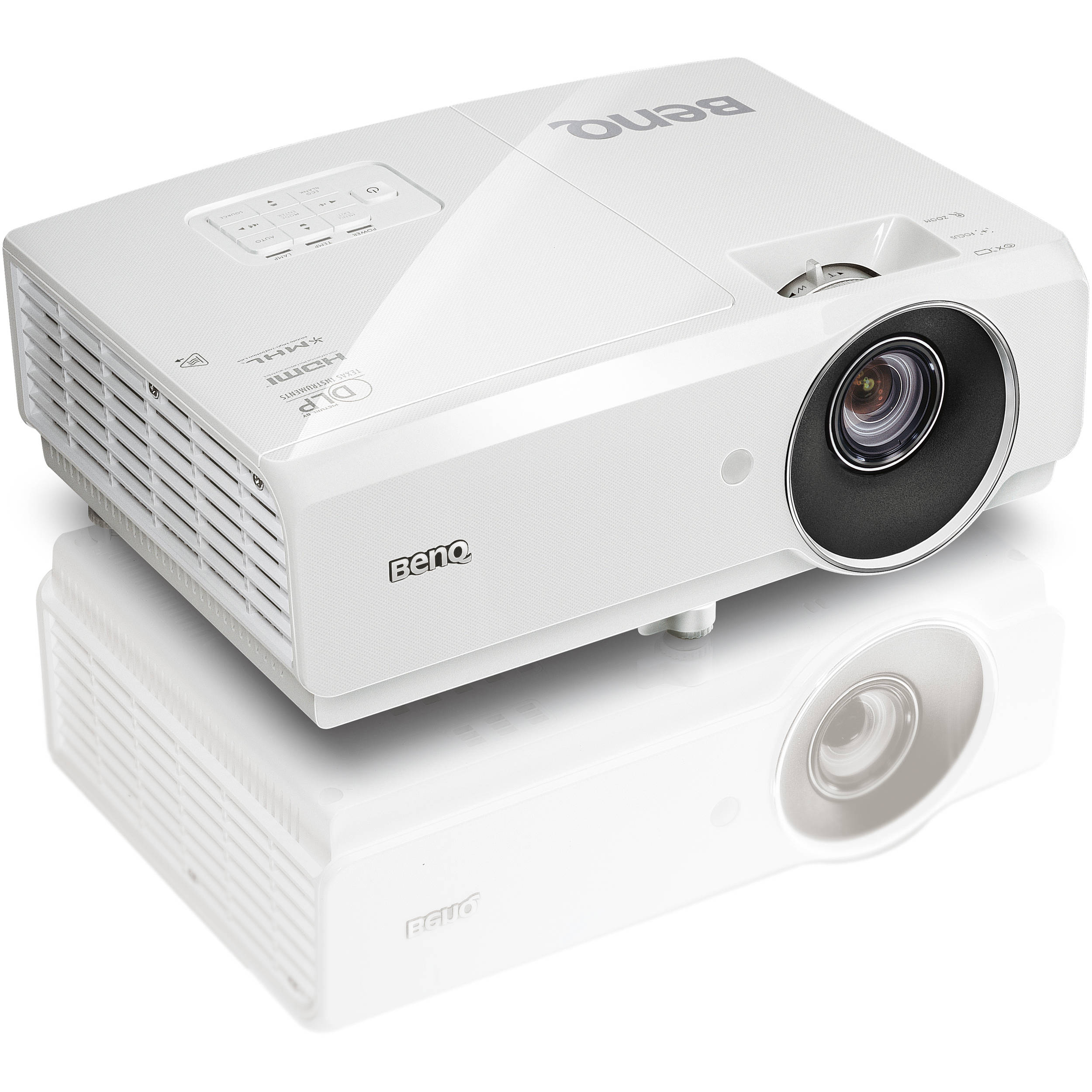
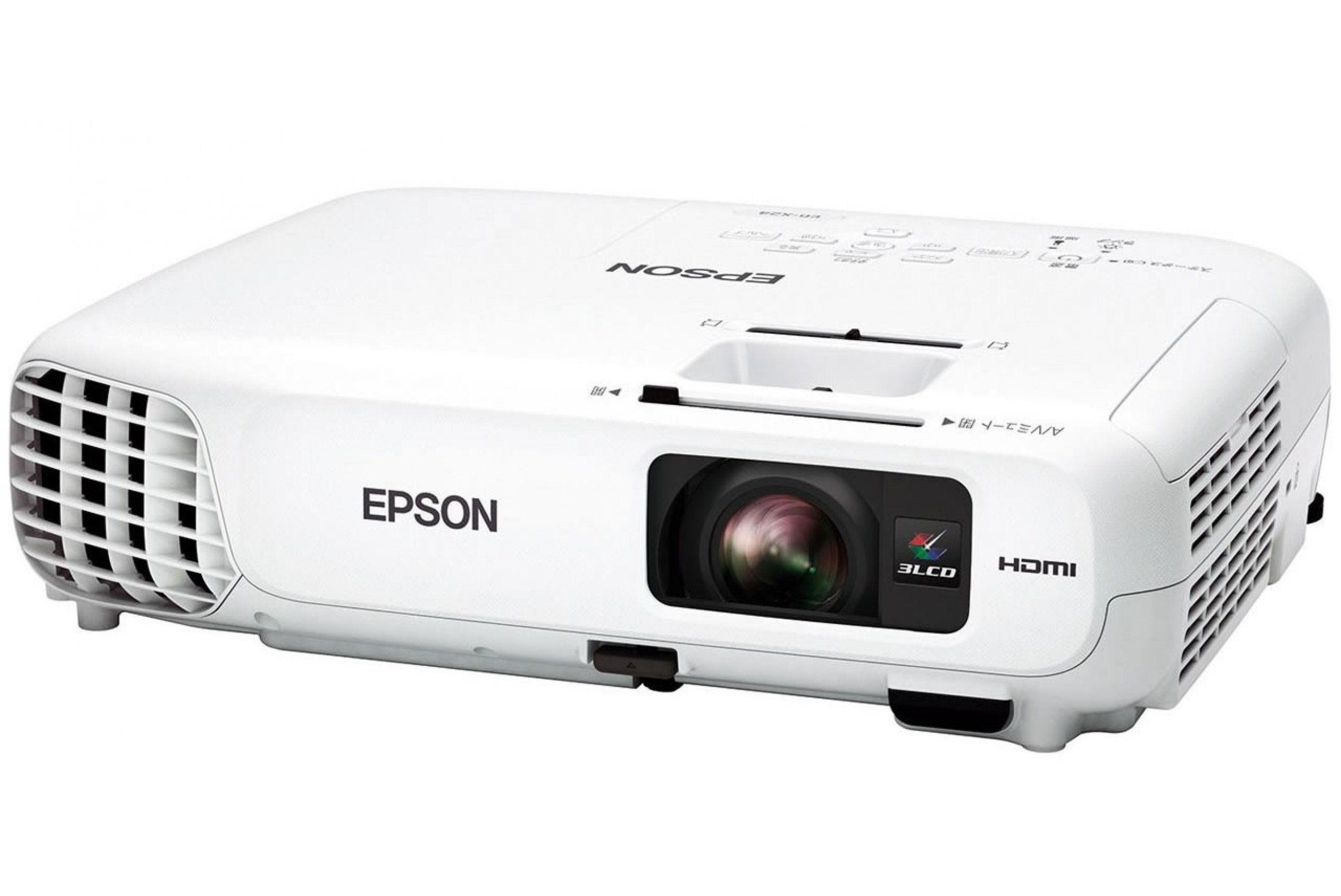
Choosing The Right Projector
To get the best picture possible — whether you're watching an HD movie at home or giving a PowerPoint presentation at work — you'll need the right type of projector for how you plan to use it. Although most projectors can handle any type of media, they generally do one thing best — whether that's entertainment-based content such as movies and TV shows, or data-based content such as spreadsheets and slideshows.
Home Theatre Projectors
With images up to 36 times larger than a 50" class HDTV, a home theatre projector lets you scrutinize every play on the football field and jump right into the action in your favourite video games. Home theatre projectors emphasize image quality and high contrast, with deep blacks and rich colour saturation. Because home theatre projectors simulate a dark movie theatre environment, they work best in a dedicated room where you can control the amount of light that enters from outside or from other areas in the house. However, you can compensate for ambient light by choosing a home theatre projector with high brightness and investing in a high-quality reflective screen to improve how the image is displayed even in partially or fully lit rooms.
Recommended for:
·Home theatre, ·Movie night, Sports, Photo slideshows, ·3D movies, ·Video games
Reasons to choose a home theatre projector:
Best image quality for large-screen viewing
Quiet fan for less background noise
HDMI ports for easy hook-up to your home theatre
Business projectors
If you plan to use your projector for meetings, presentations or classroom instruction, you'll need a business projector, also known as a multimedia or data projector. Since these projectors are brighter than home theatre projectors, they work well in meeting rooms or classrooms with overhead lighting and windows. Business projectors are designed primarily to display static images, such as graphs and PowerPoint slides, but they also work for multimedia and entertainment use. Most business projectors include an HDMI port for connecting to your laptop, Blu-ray player or other device.
Recommended for:
Business meetings, Presentations, Conferences, Education and training, PowerPoint slideshows
Reasons to choose a business projector:
Bright display even in rooms with ambient lighting
Portable size for travel and meetings
Easy to set up and adjust
Multiple inputs make it easy to connect to your laptop or other device
Wireless projection available
Pico projectors
Need a projector small enough to fit in your briefcase or purse? Pico projectors are pocket-sized projectors that are compact enough to hold in your hand but powerful enough for sharing images with a small group of people. Since they weigh less than 3 pounds, pico projectors are easy to take with you almost anywhere, which comes in handy for frequent travel and off-site meetings. You can also bring your projector to a friend's house for movie night or sports games, or set it up in the backyard to watch an outdoor movie with family and friends.
Recommended for:
Small rooms, Small group presentations, Personal use at home or on the road
Reasons to choose a Pico projector:
Ultra compact and lightweight, easy to set up and use anywhere you go, smallest size available in a projector, extremely portable, ultra long lamp life
Types of Projectors
Most projectors display images based on either DLP (digital light processing) or LCD (liquid crystal display) technology. While both types of projectors feature sharp image quality and accurate colour representation, each has its own advantages.
DLP advantages:
Allows for a lightweight and compact projector (especially for pico models), Portrays a film-like picture from DVD, Blu-ray and HDTV sources, Smooth motion for videos and fast-action scenes, Deeper, truer blacks than LCD projectors, High colour contrast, 3-chip DLP on premium models provides even higher image quality.
LCD advantages:
Brighter output for use in well-lit rooms, Impressive colour brightness, Sharper images for detailed graphs and data presentations, Vibrant 3D images with no image ghosting, More energy efficient than DLP projectors, Slightly quieter than DLP projectors, Most LCD projectors include 3-chip LCD technology (3LCD) for even higher image quality.
LCoS technology
LCoS (liquid crystal on silicone) is a third type of projector technology, generally available only on high-end models. These types of projectors provide a combination of the benefits of DLP and LCD projectors, including a bright display, smooth video, and impressive colour saturation.
Projector Technology
Light sources
Projectors are powered by one of three light sources: standard lamp, laser or LED (light-emitting diode).
Standard lamp:
Bulb can last 3,000 to 4,000 hours (up to 5,000 hours in eco mode), Bright light output, Most affordable option
Laser:
No bulb replacement needed, considerably brighter than other light sources, better contrast than standard lamps, wider colour range than standard lamps, energy efficient.
LED:
Bulb can last up to 20,000 hours, better colour control than standard lamps, quiet operation and smaller footprint than projectors with standard lamps, since energy-efficient LEDs generally don't require a fan for cooling, widely used in pico projectors.
Brightness
Projector brightness is measured by lumens; the higher the lumens, the brighter the projector will be at a given distance. Two separate brightness measurements can help you choose a projector that will display bright, colourful images in any lighting. White brightness (white light output) indicates the total amount of white light emitted by the projector, without measuring colour. Colour brightness (colour light output) measures how bright the projected colours of red, blue and yellow will be; the higher the number, the more detail and vibrancy you will see. Be sure to compare both brightness measurements before you decide which projector you want. If the colour brightness of a projector is lower than its white brightness, the images and details it displays may be dark or dull. If you're buying a business projector, you'll want a brighter output, so look for a higher lumen rating in both white and colour brightness. Since you'll likely be using it in a well-lit room or with the lights dimmed, the light from the projector needs to be able to compete with light from other sources and still display an image that looks good. The larger the room is, or the more light entering the room, the more lumens you'll need for an adequately bright image. If you're buying a home theatre projector, brighter is not necessarily better. Instead, you want enough brightness for rich colour contrast but not so much that it washes out dark-scene details or creates eye fatigue. Most home theatre projectors are designed for rooms with complete control over the lighting; however, if there's ambient lighting in the room, you will need a projector with more brightness.
Contrast Ratio
Contrast is the amount of difference between the darkest and brightest areas of a picture. A projector with a high contrast ratio allows you to see clearly defined shadow detail and deep black levels, adding a sense of depth and dimension to the picture. Since a greater amount of light in the room can wash out the difference in contrast between projectors, it's more important to pay attention to contrast ratio for home theatre projectors than it is for business projectors. In darkened rooms, such as an ideal home theatre environment, contrast will be much more noticeable. Business projectors, on the other hand, are often used in well-lit rooms, where contrast is muted because of the additional light.
Resolution
The total number of pixels that a projector is capable of displaying defines the projector's native resolution. The more pixels you can fit in the display, the crisper and more detailed your images will appear. Higher resolutions are especially important for home theatre projectors, since the viewer will be sitting closer to the screen. The higher the resolution, the closer you can sit to the screen without viewing a pixelated image. Resolutions range from 480p on the low end to 720p and 1080p for HD viewing, and up to 4K Ultra HD for impressively sharp movies and shows.
You'll get the best image quality by matching the projector resolution to the resolution of the video source you plan to use most often. For example, if you want to watch movies on your Blu-ray player, you'll need a 1080p projector to view the movies at full resolution. If you want to share your laptop screen, choose a projector with the same image format as your laptop, such as XGA for a 1024 x 768 display.
Home Theatre Formats:
Standard (4:3 aspect ratio) recommended for classic films or DVD-based television series. Widescreen (16:9 aspect ratio) recommended for HDTV, widescreen DVD and Blu-ray formats. Cinemascope (2.35:1 or 2.4:1 aspect ratio) recommended for an immersive, theatre-like experience at home. Requires an anamorphic lens (a lens that stretches the image while maintaining proportions), 2.35:1 or 2.4:1 screen, and a projector with the proper scaling modes.
Business Formats:
Standard (4:3 aspect ratio) Formats such as SVGA (800 x 600 pixels) and XGA (1024 x 768 pixels) are suitable for PowerPoint presentations, with more detail available in XGA format. Higher resolutions, such as SXGA+ (1400 x 1050 pixels), are suitable for detailed photography and data graphics. Widescreen (16:9 aspect ratio) WXGA (1280 x 800) is recommended for laptops and devices with widescreen output.
Throw Ratio
The throw ratio tells you how wide the image will be when you place the projector at a certain distance from the screen. For example, a 1.8:1 ratio will produce a 5-foot wide image when you place the projector 9 feet from the screen (5 feet x 1.8). Calculating the throw ratio is especially important if you plan to permanently mount the projector. If you can't install the projector far enough away from the screen due to space limitations, you may need a short throw projector. A short throw projector will allow you to mount the projector much closer to the screen, while still displaying a wide enough image to fill the entire screen.
Lens Zoom
If you'll be setting up your portable projector in different places where you won't always have control over the screen size or placement of the projector, you can use the lens zoom to adjust the image size. By adjusting the lens zoom, you won't have to move the projector closer or farther away from the screen in order to adjust the image size. The greater the zoom ratio, the larger you can make the image. For example, a 1.2x zoom creates an image up to 20% larger than the minimum size. A 2.0x zoom creates an image twice the minimum size. Not all projectors feature a lens zoom; pico projectors, for example, often exclude the lens zoom in order to make the projector as compact as possible.
Keystone Correction And Lens Shift
If for some reason you can't place the projector exactly perpendicular to the screen, keystone correction allows you to correct distortion by digitally adjusting the image so it is perfectly square on the screen or wall. Lens shift, on the other hand, allows you to mechanically adjust the angle of the lens by shifting it up, down or sideways. Since lens shift retains 100% of the resolution in the projected image, it's a better way to correct distortion than keystone correction. Keystone correction is available on almost every projector, offering a quick way to adjust the image on data projectors and pico projectors, which get moved around most often. Lens shift is available mainly on high-end home theatre projectors, where the projector will be installed semi-permanently on the wall or ceiling.
Optional Features
3D Technology
Most home theatre projectors feature 3D technology for entertainment that puts you right in the picture. A 3D-ready projector hooks up to other 3D-compatible devices for a true 3D experience on a giant screen. Some projectors feature built-in 3D capability, while others require a 3D emitter (sold separately) in order to display 3D content.
Wireless Projectors And Adapters
If you want to project photos or a PowerPoint presentation wirelessly from your laptop, Smartphone or tablet, you'll need a projector with wireless capabilities. Some projectors even allow you to send an HDMI signal wirelessly from the video source to the projector using a wireless HD transmitter that's either built in or sold separately. You can download a wireless projector app for iOS or Android that works with your specific projector brand. Smart-enabled technology, currently available only on select home theatre projectors, allows you to stream movies, music and entertainment by connecting directly to the Internet. You can also stream content by connecting a streaming media player to your projector.
Connections
Before you can splash your slideshow or movie on the big screen, you'll need to find a way to hook up your image source to the projector. Business projectors and home theatre projectors each have their own set of inputs and outputs, which vary from projector to projector.
Home Theatre Projectors
Home theatre projectors almost always include one or more HDMI inputs for your cable or satellite box, Blu-ray player, gaming console and other devices. Your home theatre projector may also include other ports, such as component video, VGA, an SD card slot and USB. Audio outputs allow you to connect to your sound system. Make sure you have the right type and the right number of connections that you'll need. For example, if you want to connect a Blu-ray player, gaming console and HD cable box to your home theatre projector, you'll need a projector with at least three HDMI inputs. Since your home theatre projector will likely be mounted on the ceiling or wall, you'll need to find a way to run cables from your projector to your entertainment system. A professional installer, such as Geek Squad®, can help you hide unsightly cords by running cables through the ceiling or walls for a clean, invisible setup.
Business Projectors
Business projectors typically include VGA and USB inputs. Some include DVI or HDMI inputs as well. Built-in wireless offers even more flexibility by letting you share presentations without the hassle of hooking up cables or making sure you have the right connections. Although some business projectors include built-in audio, the sound quality is generally weak. For better sound, use the audio ports to connect to external speakers.
Projector Screen
Why Use A Screen?
Although you can use a white wall as a screen in a pinch, a high-quality projection screen will make the picture look better and brighter. Since the screen reflects back light, it works together with your projector to make colours and images pop off the screen. Every screen is rated according to its gain factor, or how efficiently it reflects light. The higher the gain, the brighter the image will be on the screen. White screens enhance brightness, which is especially beneficial for business use, where you'll be viewing images in a well-lit room and presenting documents and graphs with a white background. Gray screens boost colour contrast and make 3D images stand out more, which makes it a good colour choice for a home theatre room with ambient lighting or light-coloured walls.
Types Of Projector Screens
There are four basic types of projector screens: motorized, fixed, pull-down and portable. Motorized (or electric) screens lower and raise at the touch of a button. Besides impressing your audience, motorized screens make it easy to control the screen when it's mounted out of reach.
Fixed screens are mounted on the wall, which requires a dedicated space but no lowering or raising. Pull-down (or manual) screens save space by letting you retract the screen when not in use; this allows you to use the same space for other purposes, such as mounting a whiteboard in a classroom or meeting room, or displaying artwork or bookcases in your home.
A portable or tripod-mounted screen scrolls open and closed for portable use, with tripod legs or a built-in stand for support.
Screen Sizes
With a projector and screen, you can make images much larger than most HDTVs can. The screen size needs to match the aspect ratio of your projector, such as 4:3, 16:9 or 2.4:1.
Screen sizes range from 50" measured diagonally to 300" measured diagonally or even larger. You'll want to make sure the screen will fit your space before you make your purchase. Measuring the ceiling height, making sure the screen is high enough off the floor to see over a coffee table or other furniture, and figuring out where you'll mount the centre speaker are all issues to take into consideration when choosing how big you want to go.
Accessories
Projector Mount
If you'll be using your projector in only one location, mounting the projector on the wall or ceiling is a big advantage. Mounting your projector keeps it secure and ready to use, without needing to set it up or adjust the angle each time you use it.
Universal Remote
Control all of your audio and video equipment, including your projector, with one remote. Some universal remotes use wireless connectivity to control devices even when they're behind doors or in another room.
Audio Sound System
For the best sound, you'll need to connect your projector to an external audio system. A full surround sound system will complement the big-screen viewing experience offered by your projector and screen.






